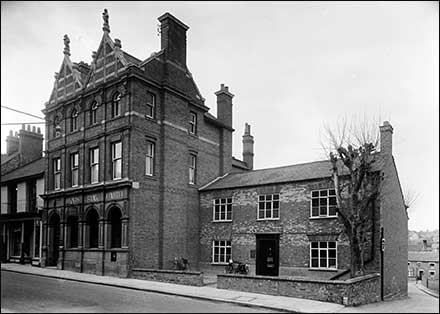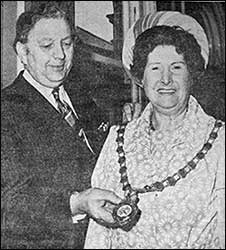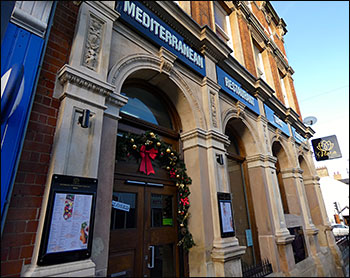|
|
||||||||||||||||||
| Round the Branches—No. 186, 1972 |
||||||||||||||||||
|
Lloyds Bank 1972
|
||||||||||||||||||
|
Rushden
|
||||||||||||||||||
Since 1921, The Dark Horse has been publishing articles on our branches, more recently under the series title of "Façade" We are changing this title, which we feel might have given the impression that we took only a superficial look at each branch (though that was certainly not the case) and the series will now simply be called "Round the Branches". We hope in the future to give more coverage to the branch staffs (as befits a staff magazine) as well as to history, premises, nature of the business and so on. We should be pleased to hear from any branches who would like to be included in the series, in particular whose which have not been the subject of articles in the past. Rushden—somewhere in the Midlands? Yes; though even some Midlanders might find it hard to say just where: it's a large area. Bedfordshire, perhaps? Wait a minute, though—boots and shoes. Must be Northants. or Leicestershire. They produce 50% of the country's boots and shoes between them. In fact, Rushden stands on one of the last pieces of rising ground as you go east from Northampton towards the Bedfordshire fens: it is actually in Northants, but Bedfordshire runs up almost to its boundary and Leicestershire is only 15 miles to the north. A hundred years ago it was a village with a population of 2,000, but in the 1870s the boot and shoe trade began to prosper with the introduction of new machinery and Rushden grew. (The present population is 20,000.) By 1890 its prosperity had caught the eye of the Capital and Counties Bank, which opened in handsome premises at 133 High Street. In 1972 Remodelled
Now we are represented in Rushden by premises which yield nothing in attractiveness to those of our competitors, despite their positions nearer—it has to be admitted—to the "better" end of the High Street. With more than enough space for the present staff of 12, and with a growing business—the 2,000 current accounts mark was passed in August—we are well placed to hold at least our fair share of the traditional boot and shoe trade as well as a good stake in the diversified light industry the town is now encouraging on its new trading estate. (In view of this trend, it's interesting that the branch's largest account is not that of a footwear factory at all but of a well-known manufacturers of drinks-vending machines, based in London.) Mr Goulsbra (as we reported at the time of the reopening of the premises after their facelift) is chairman of Rushden U.D.C., having been a councillor for the past eight years and vice-chairman last year: as such, he is intimately involved in the life of the town. He has a particular interest in the operatic and dramatic societies, of which there are three: he is chairman of the Theatrical, secretary of the Operatic and treasurer of the Dramatic Society (the Rushden Players), for which he has also both acted and produced.Lionel Meredith, the branch's sub-manager, is something of a football fanatic: he is a shareholder in Hereford and Burnley football clubs and his enthusiasm for Hereford —his home team—involves him in arduous crosscountry journeys to their matches.
|
||||||||||||||||||





